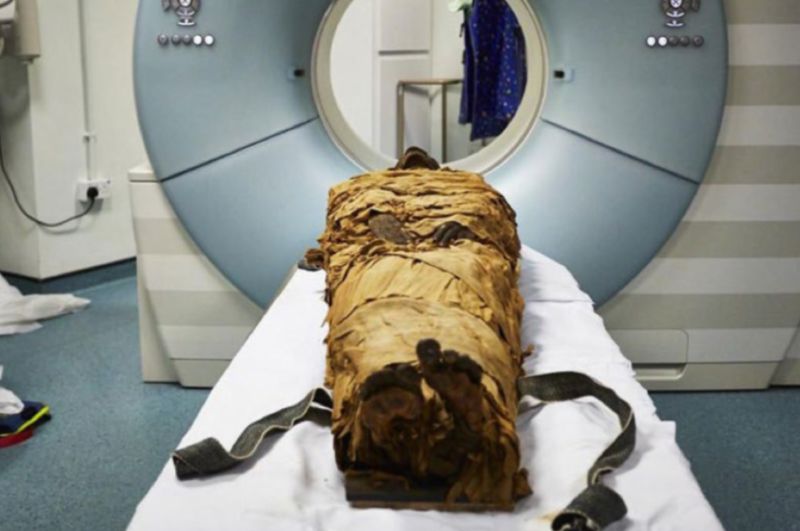After 3,000 years, we can hear the “voice” of a mummified Egyptian priest

Enlarge / The mummy of Nesyamun, a priest who lived in Thebes about 3,000 years ago, is ready for his CT scan. (credit: Leeds Teaching Hospitals/Leeds Museums and Galleries)
Around 1100 BC, during the reign of Ramses XI, an Egyptian scribe and priest named Nesyamun spent his life singing and chanting during liturgies at the Karnak temple in Thebes. As was the custom in those times, upon death, Nesyamun was mummified and sealed in a coffin, with the inscription "Nesyamun, True of Voice (maat kheru)." His mummy has become one of the most well-studied artifacts over the last 200 years. We know he suffered from gum disease, for instance, and may have died in his 50s from some kind of allergic reaction. The coffin inscription also expressed a desire that Nesyamun's soul would be able to speak to his gods from the afterlife.
And now, Nesyamun is getting his dearest wish. A team of scientists has reproduced the "sound" of the Egyptian priest's voice by creating a 3D-printed version of his vocal tract and connecting it to a loudspeaker. The researchers revealed all the gory details behind their project in a new paper in Scientific Reports.
"He had a desire that his voice would be everlasting," co-author David Howard of Royal Holloway University of London told IEEE Spectrum. "In a sense, you could argue we've heeded that call, which is a slightly strange thing, but there we are."
Read 13 remaining paragraphs | Comments